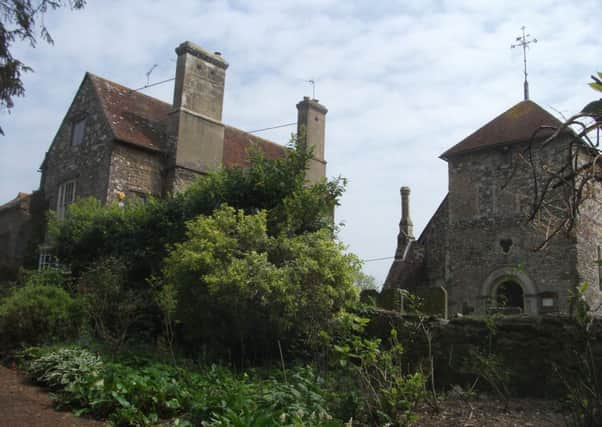Sullington festival will take you back


The event will take place at Sullington’s St Mary’s Church from Friday June 27 to Sunday June 29.
The church will be looking resplendent and it will be possible to partake of refreshments in the recently restored barn and admire the workmanship of the craftsmen of the past and today.
Advertisement
Hide AdAdvertisement
Hide AdThe festival will be an ideal way to explore the rest of Sullington and its hidden gems.
One of the glories of the village, is the magnificent tithe barn, situated in the farmyard. It is said to be one of the finest in Sussex, with aisles and a braced tie-beam roof, and is thought to date back to 1685.
By the beginning of the 21st Century the barn was in need of restoration.
This was accomplished in 2013 by the present owners, with the aid of a grant from English Nature.
Advertisement
Hide AdAdvertisement
Hide AdUnder the guiding hand of John Russell of Timber structures, the barn has been expertly restored to something approaching its former glory, to be enjoyed and admired by generations to come.
Eighty years ago the author, Arthur Mee, visited Sullington and wrote: “It is a lovely little place, far from the world’s ignoble strife, with a fine view from its lychgate of Chanctonbury Ring, and its glorious range of hills.”
Situated some half a mile down a lane off the busy A283 between Washington and Storrington, one finishes up in the farm yard of Sullington Manor Farm which stands close by the ancient church of St Mary.
Today, Arthur Mee would find little changed since his visit. Sullington is one of those places, rarely found today, where time seems to have almost stood still. And yet, in this tiny place, can be found encapsulated, the history of England.
Advertisement
Hide AdAdvertisement
Hide AdNearby has been found arrowheads from the Neolithic era, some 5,000 years or more old. Up on Sullington Hill are Bronze Age burial barrows dating back some 4,000 years, whilst not far away a Roman road crosses the parish.
In the churchyard stand some old yew trees, suggesting that this may have been a pre-Christian place of worship, whilst echoes of the 20th Century are found in the war memorial by the lychgate, which is made from an old Sussex field roller, and bears the names of those who left this tranquil place to fight for their country and never came back.
Sullington features in the Domesday Survey of 1086, which tells us that before the Norman invasion it had been held by Wulfward from King Edward the Confessor. Following the Conquest, part of the parish was held by Roger de Montgomery of Arundel, and William de Braose of Bramber.
The tower of the church is Saxon, built before the Normans came, although most of the church dates to the 12th and 13th Centuries.
Advertisement
Hide AdAdvertisement
Hide AdWithin the nave, by the entrance door lies the life-sized carved marble effigy of a knight in chain mail. It is thought that he may be Sir William de Covert who died around the middle of the 13th Century.
For St Mary’s directions, visit www.st-marys-sullington.org/location.htm